In total, there are eight species of hornbills in Borneo – the best place to see them seems
to be the Kinabatagan River area (also known as Sukau). I saw four of them there and
another one at Tabin. That leaves three hornbill species that are not covered in this post –
the Critically endangered Helmeted Hornbill, the Near Threatened Bushy-crested Hornbill,
and the Endangered White-crowned Hornbill. A good reason to come back soon then, I
guess. If you want to see photos of all 8 of them, there is a nice one-page leaflet online
which is also the source of some of the information below.
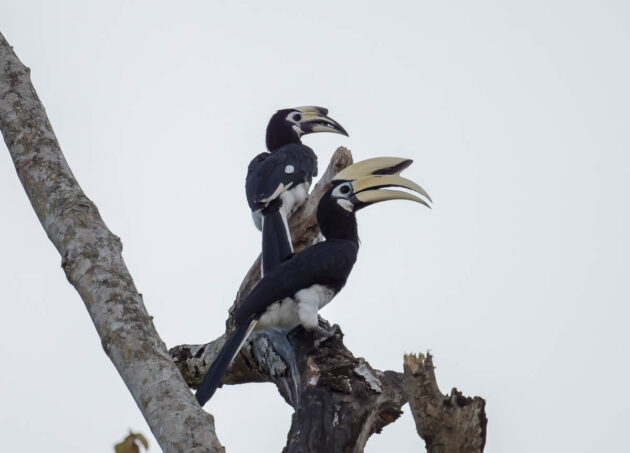
Basically, hornbills get paid by evolution to eat fruit, digest the fleshy parts, and regurgitate or defecate the rest – a means of seed transportation that is apparently quite attractive to many plants despite the yuck factor involved.
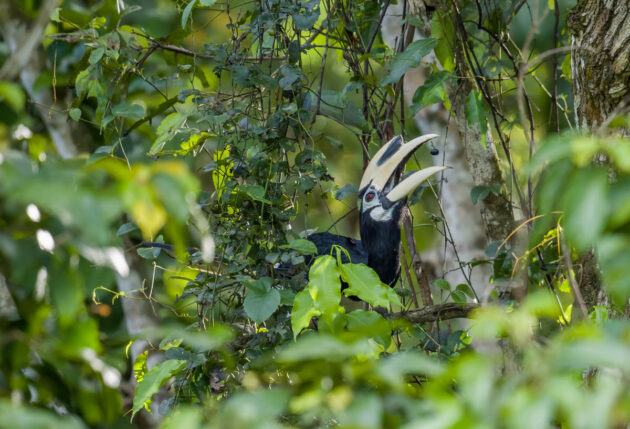
For example, fallen figs do not seem to mind catching a ride with Oriental Pied Hornbills.
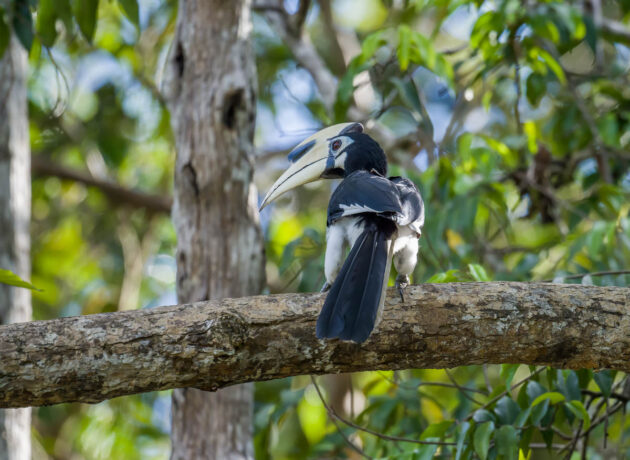
However, they also feed on other things that are less happy about being eaten, as demonstrated by the struggling victim of this Oriental Pied Hornbill.
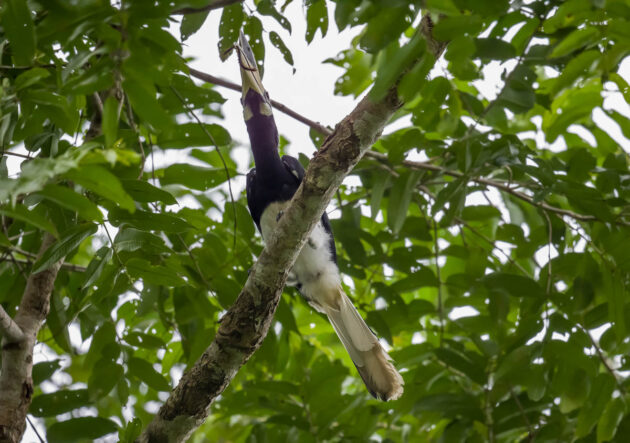
Another item they feed on is hunting edible bird nest swiftlets, which are quite common in edible swiftlet houses in Sabah, Malaysia (source). The part of the paper available online describes a video in which “the hornbill pair was seen side by side, observing the swiftlets movements entering and/or exiting while being about a foot away from the square entrance of the roof. The first attempt in hunting was made by the male hornbill which was seen snapping at a passing swiftlet, but was unsuccessful. Simultaneously, the female hornbill was observed to monitor the swiftlets as seen from her head movements following the flying swiftlets flight.”
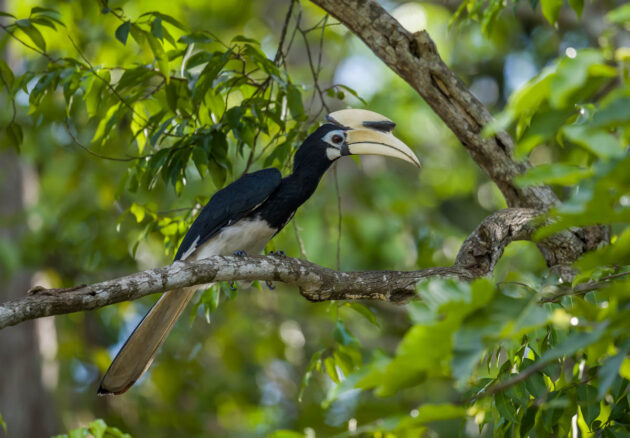
Another paper reviews information on Oriental Pied Hornbills raiding the nests of various bird species in Singapore and even pet bird cages. The latter is even captured in a somewhat gruesome video, in which the hornbill plucks a caged bird out of its cage and kills and eats it.
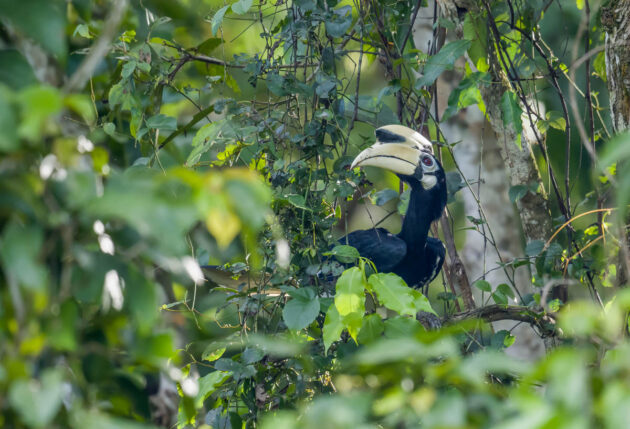
Even more attractive for those who like their nature raw may be a paper on infanticide and cannibalism among hornbills. It describes how among 4 hornbill chicks, the smallest one cannot compete for food and eventually dies – though the description of this is much more graphic in the paper:
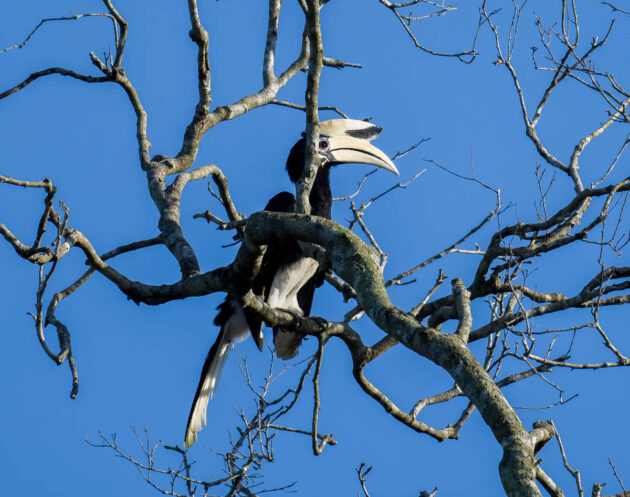
“On the fourth day after hatching, the fourth chick ceased giving begging calls (although it continued gaping). At 15h59, the female picked up the fourth chick and killed it by repeatedly crushing it with her beak. Then she tried to feed it to the remaining chicks. All three chicks attempted to swallow it, and after 30 minutes the second oldest chick succeeded”
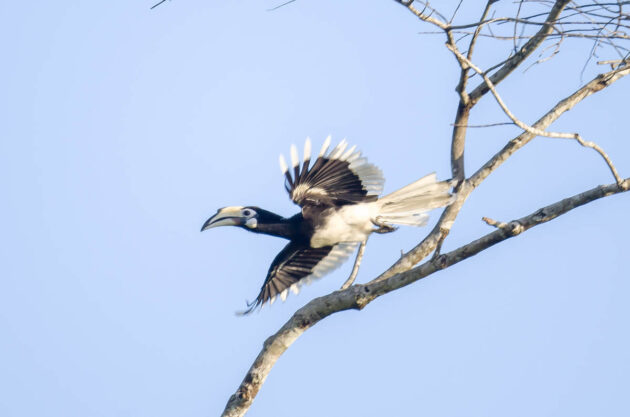
The Oriental Pied Hornbill is the only hornbill classified as Least Concern, and it can be found even in fairly central areas of Singapore. In fact, a recent article in the Economist on Singapore’s rewilding states “The oriental pied hornbill (pictured), with its extraordinary ivory casque, had been locally extinct for a century. Now pairs of hornbills feed outside this correspondent’s window”.
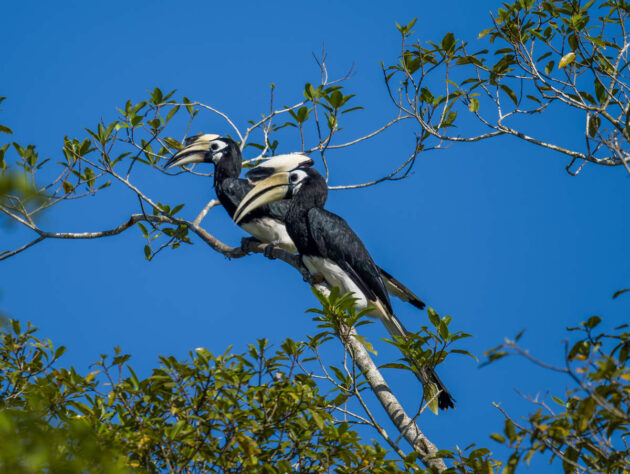
Indeed, this species seems to be the equivalent of weeds among the hornbill species. One paper describes them breeding in a human settlement in abandoned clay jars.
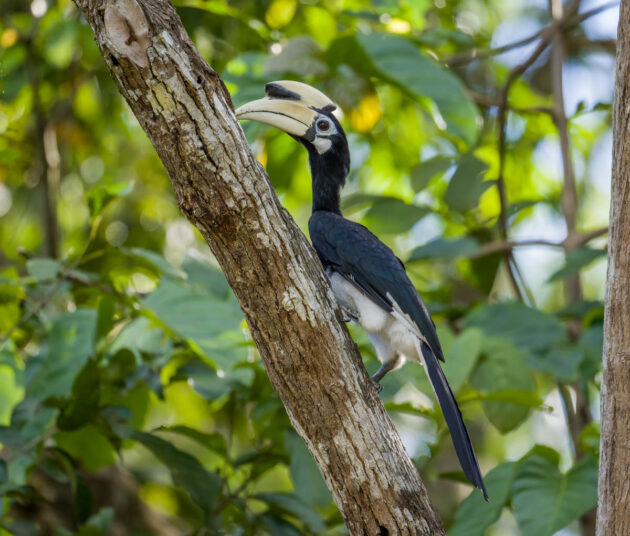
Unfortunately, the other hornbill species are not nearly as adaptable. The Black Hornbill is listed as Vulnerable, a change for the worse from the previous listing as Near Threatened.
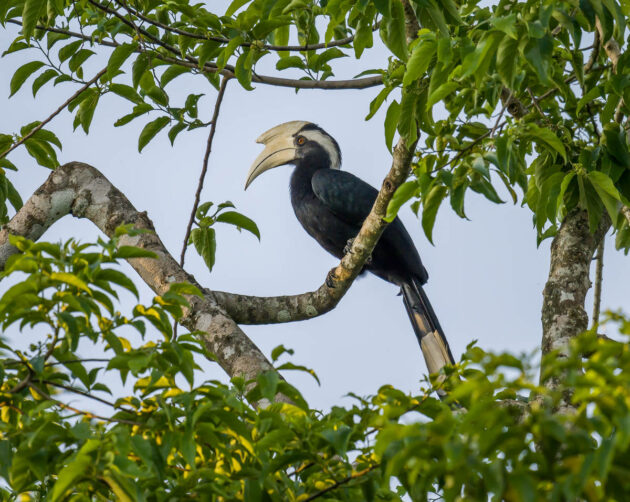
Presumably, the species also not only eats fruit but also mammals and possibly birds –the HBW specifically mentions the species catching bats emerging from caves at dusk, and feeding them to juveniles.
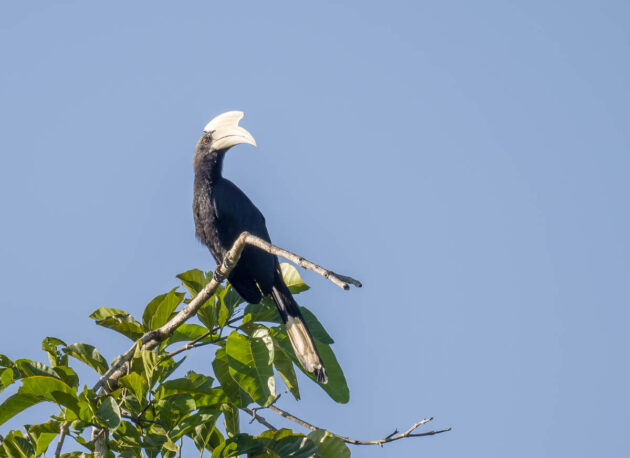
It is also a major dispenser of Durian fruit, which makes me doubt the taste of this species a bit – apparently, in Malay, it is even called the Durian bird (source).
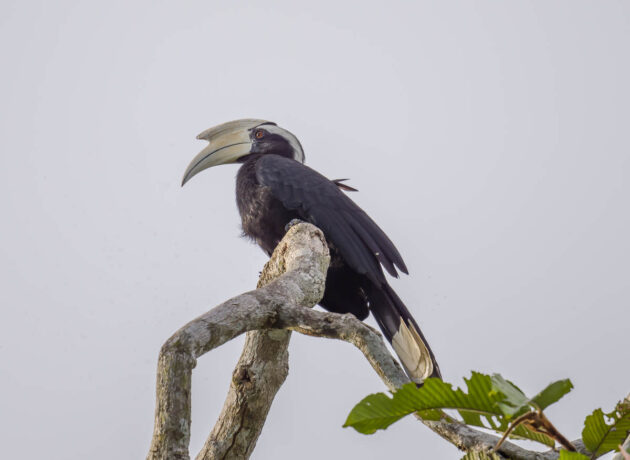
There are some reports of the species having bred in captivity, for example, in a British Wild Life Park.
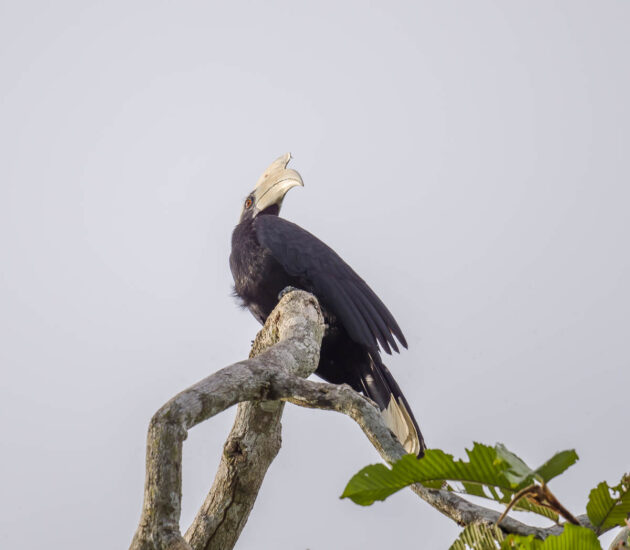
To avoid quarrels about different education styles, each adult attends a separate chick after fledging (source: HBW). Clever.
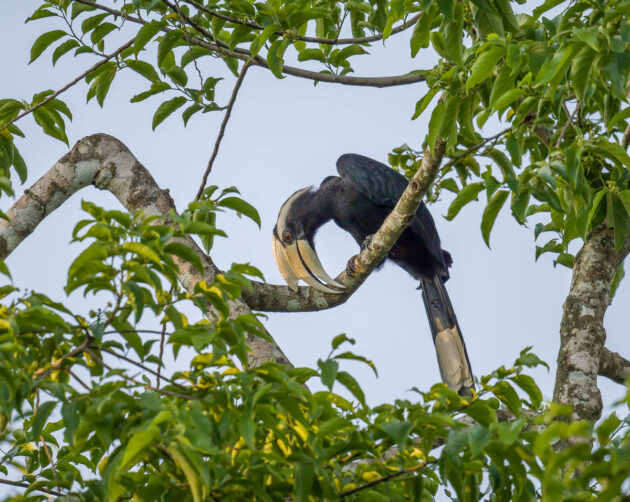
Hornbills use natural cavities in large living trees for nesting, as they cannot create their own nesting holes – a problem when those large trees are being selectively logged. One solution employed at Kinabatangan is the use of artificial nesting holes – they look fairly unattractive in my eyes but seem to be accepted by Rhinoceros Hornbills. They have been found nesting in two of these boxes, producing five chicks in three years (source).
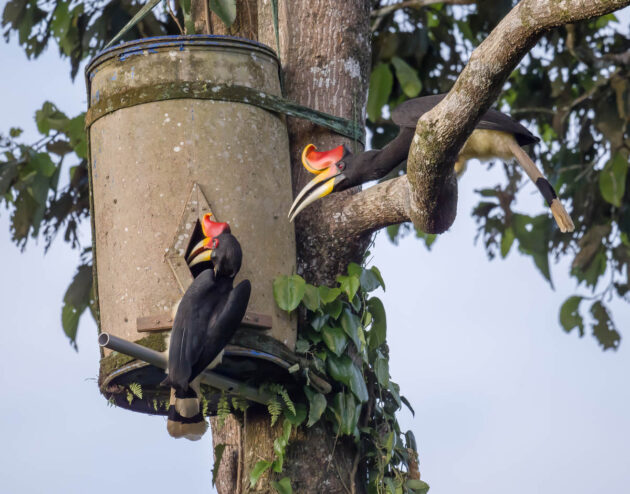
Fortunately, Singapore is not Florida, where Mr. DeSantis would probably have the two birds described in a paper culled (though the paper talks about “aberrant” behavior, which is a phrase Mr. DeSantis would probably feel comfortable with). The two birds in question were a female Great Hornbill and a female Rhinoceros Hornbill, both escapees. Apparently, the two birds frequently were observed together, with the Great Hornbill playing the role of a male while the Rhinoceros Hornbill played that of a female: “The pair still continued with their courtship feeding around the nearby shorter trees, with the Great Hornbill feeding the Rhinoceros Hornbill with regurgitated food”.
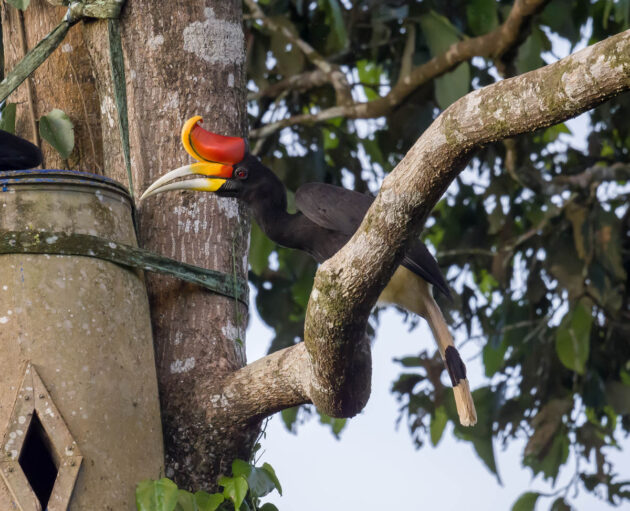
In fact, given the right chromosomes, hybridization is possible between the two species and has been observed (source).
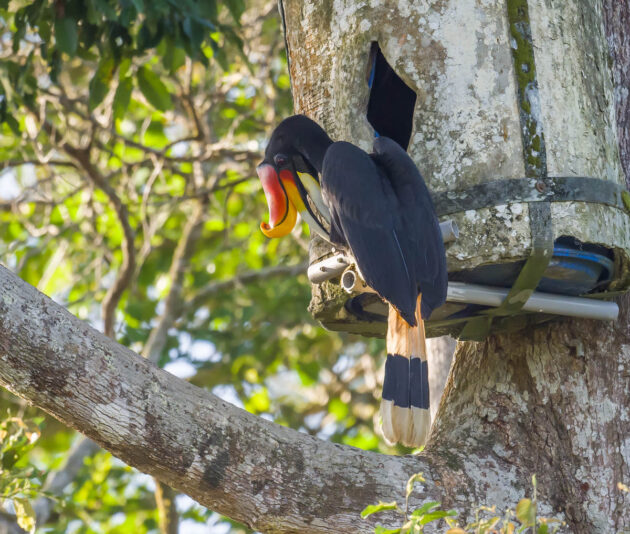
The Rhinoceros Hornbill is the state bird of the Malaysian state of Sarawak (source), which unfortunately does not prevent hunting of the bird, not only for meat but also for the feathers. Apparently, a single team of traditional dancers uses about 400 rhinoceros hornbill feathers, which involves killing 40 birds (source).
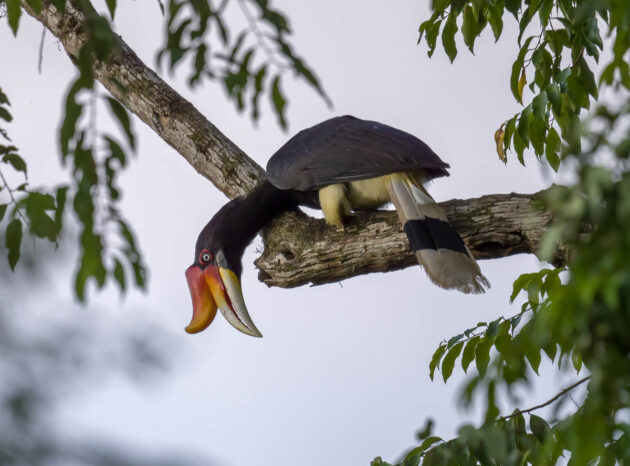
When one Chinese researcher was very bored, he had a bright idea: Why not publish a paper on the complete mitochondrial genome of the Rhinoceros Hornbill?
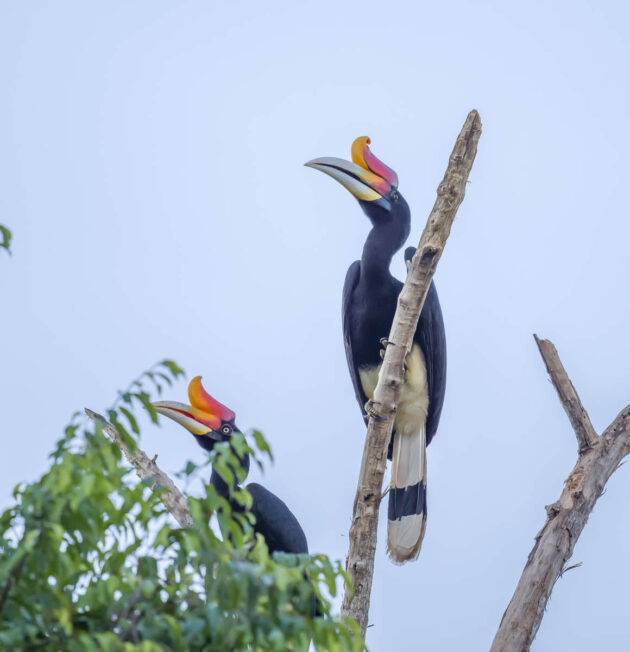
The Wreathed Hornbill is also listed as Vulnerable. This species probably is probably quite popular with plants due to its feeding technique that leaves the seeds intact. It is described in detail on Wikipedia:
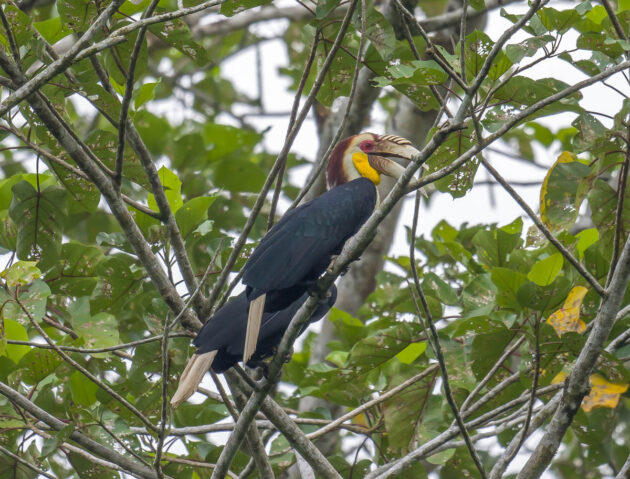
“The feeding technique used by the wreathed hornbill is called ballistic food transport. It holds the large food item at the tip of its bill and throws its head back quickly, swallowing it whole. This behavior is likely to reduce resource competition by exploiting fruit that is too large for smaller frugivores. Another advantage to ballistic food transport is that the fruit seeds are protected from damage when they are swallowed whole. The entire seed passes through the gastrointestinal tract and is excreted intact, increasing its chances of germination and forming a new plant.”
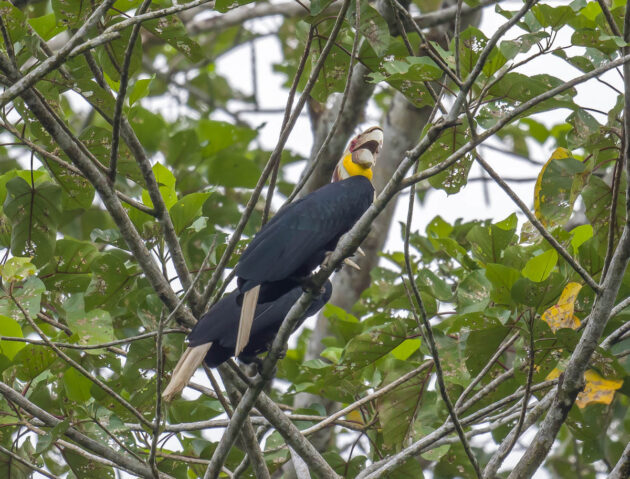
While this species is not explicitly associated with infanticide, the fact that the bird lays 1-3 eggs but only ever raises one chick also implies that the species should also be closely watched by child protection agencies.
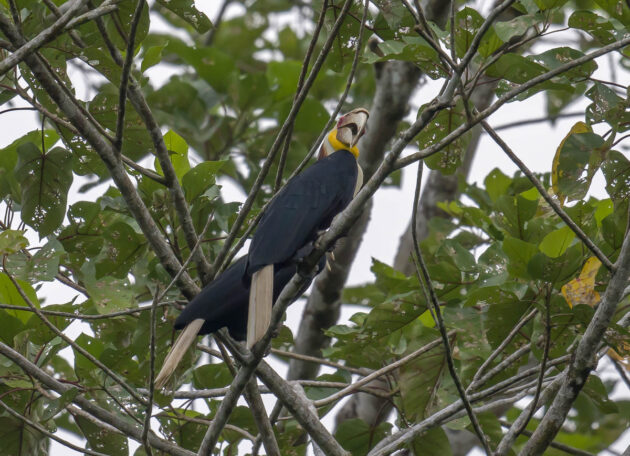
Of course, their own mother is not the only threat to Wreathed Hornbill individuals. Other threats arise from illegal logging, hunting for bushmeat, and other body parts (feathers, beak, etc.) for decorating the headgear and house interiors by the local tribals, at least in parts of India (source).
The Wrinkled Hornbill is now listed as Endangered, having been listed as Near Threatened until 2018 – it seems to have more specific habitat requirements than some of the other hornbills, and exactly that habitat is shrinking rapidly.
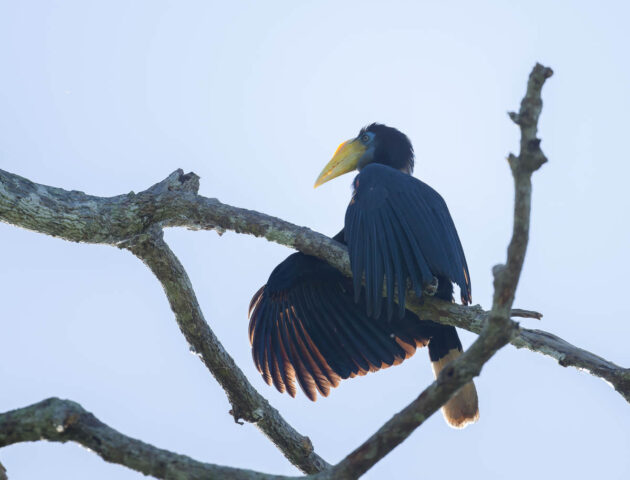
For some reason, there are several papers on various health issues of Wrinkled Hornbills. Depending on your specific interests, you can peruse papers on proventricular nematodiasis (whatever that is), Cryptosporidium oocysts (dito), or absolute erythrocytosis.
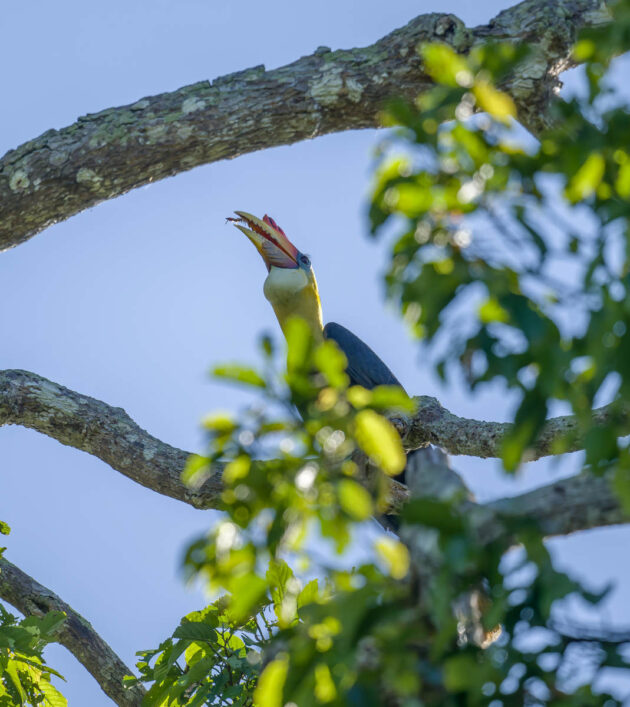
While being a vet certainly has its attractions, including possibly not having to deal with people too much, the names of these diseases sound somewhat off-putting.
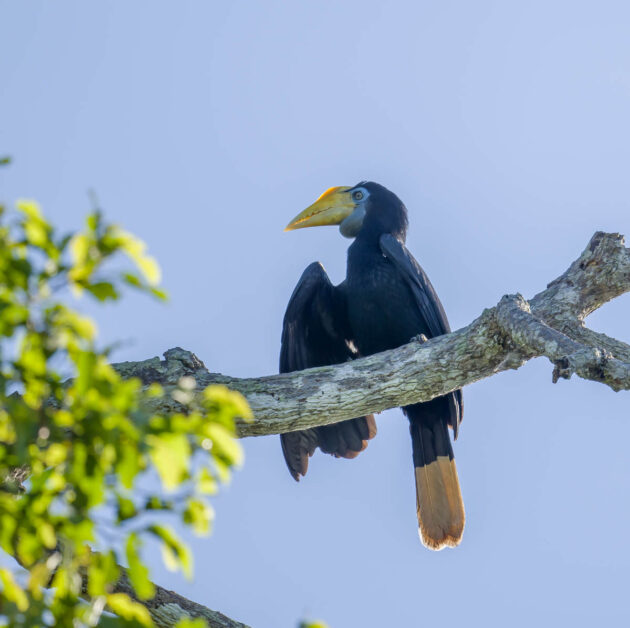
On a more positive note, one study found that remnants of forest patches in well-managed oil palm plantations can provide habitat for hornbills including the Wrinkled Hornbill.
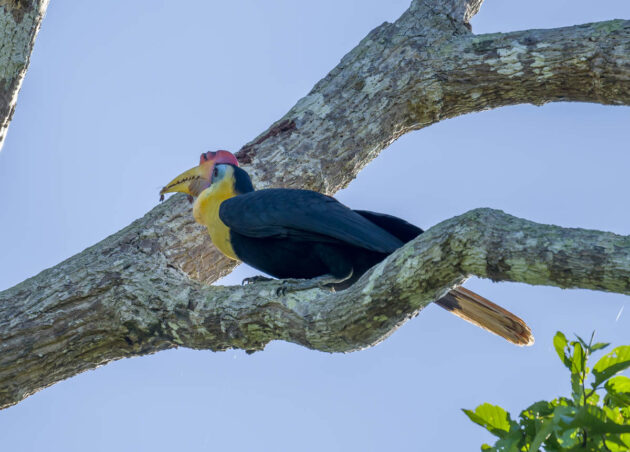
Like the other hornbills, it nests in a tree cavity, in which the female seals herself in using droppings and food remains. During the whole incubation and hatching, she is fed by the male by regurgitation through a small remaining opening. Of course, if I was locked into a small tree cavity with a bunch of kids, I would also seriously consider infanticide.
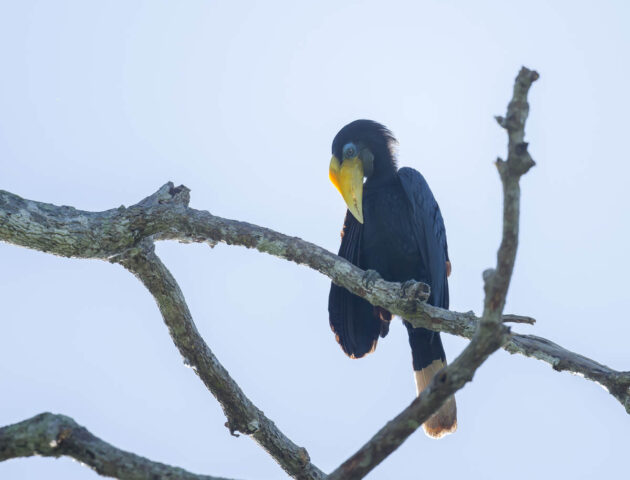
Source link


